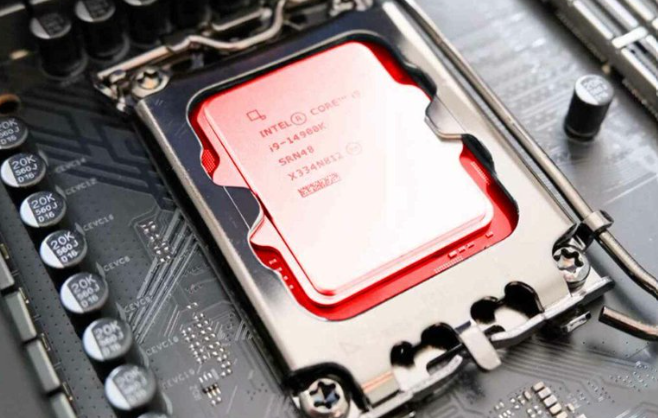Intel has been hit with challenges at every level. With so many hopes now put on chips not slated to be introduced until 2025, they need their current processors and coding error woes to go away fast.
Intel has been grappling with stability issues in its Core i9 processors when running Unreal Engine games, and recent developments suggest a minor breakthrough. A coding error affecting the boost clock management was identified, pointing to problems with the Enhanced Thermal Velocity Boost (eTVB) feature in these processors. This feature is designed to increase the clock speed of one or two P-cores beyond the standard limits, provided thermal and power constraints are not exceeded.
The issue was initially spotted in an internal document detailing a microcode error, which reportedly triggered crashes in PC games. Despite early reports linking the eTVB bug directly to these crashes, Intel has clarified that while the bug may contribute to system instability, it is not the primary cause of the issues observed with the 13th and 14th-Gen Core i9 processors. This explanation is corroborated by the fact that similar stability problems have been reported by users of the Core i7 models, which do not utilize the eTVB feature.
Intel hasn’t found Core i9 crashing issue fix, contrary to reportshttps://t.co/BBvKBN4a6S pic.twitter.com/WEqO3s5nWk
— Club386 (@theclub386) June 17, 2024
Intel has responded by advising motherboard manufacturers to implement an Intel Baseline Profile in their BIOS/UEFI settings. This profile sets the power and current limits to the specifications intended for each CPU model. For instance, the Core i9 14900K is designed to operate within a power limit of 125 W under standard conditions and up to 253 W under maximum boost. However, many motherboards exceed these values, allowing the processor to draw more power than specified, which can lead to overheating and instability.
I better remind @HanatsukiSakura to keep a look out for UEFI/BIOS updates for the Z790 motherboard I put in her livestreaming PC. Intel found a bug in their microcode. https://t.co/OLeGFtWSZP
— V.0ID (@ZearouAyedea) June 14, 2024
Setting the power limits to the manufacturer’s specifications significantly aids in preventing the processors from overheating, but it can also limit their maximum performance. For example, while a CPU might achieve speeds up to 5.6 GHz at 250 W, such performance levels cannot be sustained at lower power settings like 150 W. Despite this, for most gaming and general use scenarios where the CPU is not the bottleneck, the difference in performance between the factory-specified power limits and the elevated limits set by some motherboard vendors is negligible.
Sounds to me like @Intel needs to issue a recall if they still haven’t figured it out. –> Intel says it still doesn’t have the true fix for its crashing i9 desktop chips https://t.co/CyeVm8L6ui via @Verge
— Jeremy 💻🎮🔭 (@pcnerd37) June 16, 2024
Intel’s ongoing efforts to resolve these issues indicate a complex interplay between software and hardware that affects the stability of its latest high-performance CPUs. While the discovery of the eTVB bug represents progress, a complete solution to the stability problems is still pending. Users of affected systems are recommended to update their BIOS settings to adhere to Intel’s Baseline Profile as an interim measure to mitigate potential crashes and instability. This approach, while potentially reducing peak performance, will help ensure more stable and reliable system operations until a more definitive fix is developed.
Key Points:
i. Stability Issues Identified: Intel’s Core i9 processors have been experiencing stability problems when running Unreal Engine games due to a coding error affecting the boost clock management.
ii. Enhanced Thermal Velocity Boost (eTVB) Bug: The issue involves a bug in the eTVB feature, which allows certain processor cores to exceed standard speed limits under favorable thermal conditions. This bug was initially suspected to be the main cause of the crashes.
iii. Not the Sole Cause: Intel has clarified that while the eTVB feature may contribute to instability, it is not the primary reason for the crashes, as similar issues are present in Core i7 models that do not have the eTVB feature.
iv. Intel’s Recommendation: Intel has advised motherboard manufacturers to implement an Intel Baseline Profile in BIOS/UEFI settings that align power and current limits with CPU specifications to prevent overheating and ensure stability.
v. Impact on Performance: Adhering to Intel’s recommended power limits can prevent overheating but may limit the maximum performance potential of the CPUs, though this is generally not noticeable in most usage scenarios where the CPU is not the bottleneck.
Charles William III – Reprinted with permission of Whatfinger News



